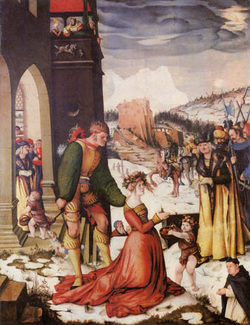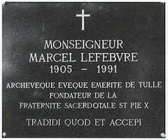
Dorothy's cult became widespread in Europe during the Middle Ages. She was venerated in Europe from the seventh century. In late medieval Sweden she was considered as the 15th member of the Fourteen Holy Helpers, and in art she occurred with Saint Barbara, Catherine of Alexandria and Margaret of Antioch, forming with them a quartet of female saints called Huvudjungfrur meaning "The Main Virgins."
She was born in the 4th Century during the time of the Christian persecutions. Saint Dorothy hated worshiping idols so the count told her father, her mother, and her two sisters, Christine and Celestine, to forsake their possessions, and so they did, and fled into the realm Cappadocia, and came into the city of Caesarea where they sent Saint Dorothy to school. Here she was betrayed to Apricius the Governor by her two sisters Chrysta and Callista, who had denied the faith in the hope he would induce her to do likewise. She was arrested, but it came not to pass as they hoped. On the contrary, she brought them back to the Christian worship, and they received martyrdom. She was long tormented upon the rack, and scourged with palm branches, and in the end was beheaded, receiving the double palm of virginity and martyrdom.
Dorothy of Caesarea's life and martyrdom was the basis of Philip Massinger and Thomas Dekker's The Virgin Martyr (printed 1622).
The Congregation of the Sisters of Saint Dorothy is a convent of active nuns, occupied primarily with teaching and the cultivation of flowers and produce. The order is named for Dorothea of Caesarea.





